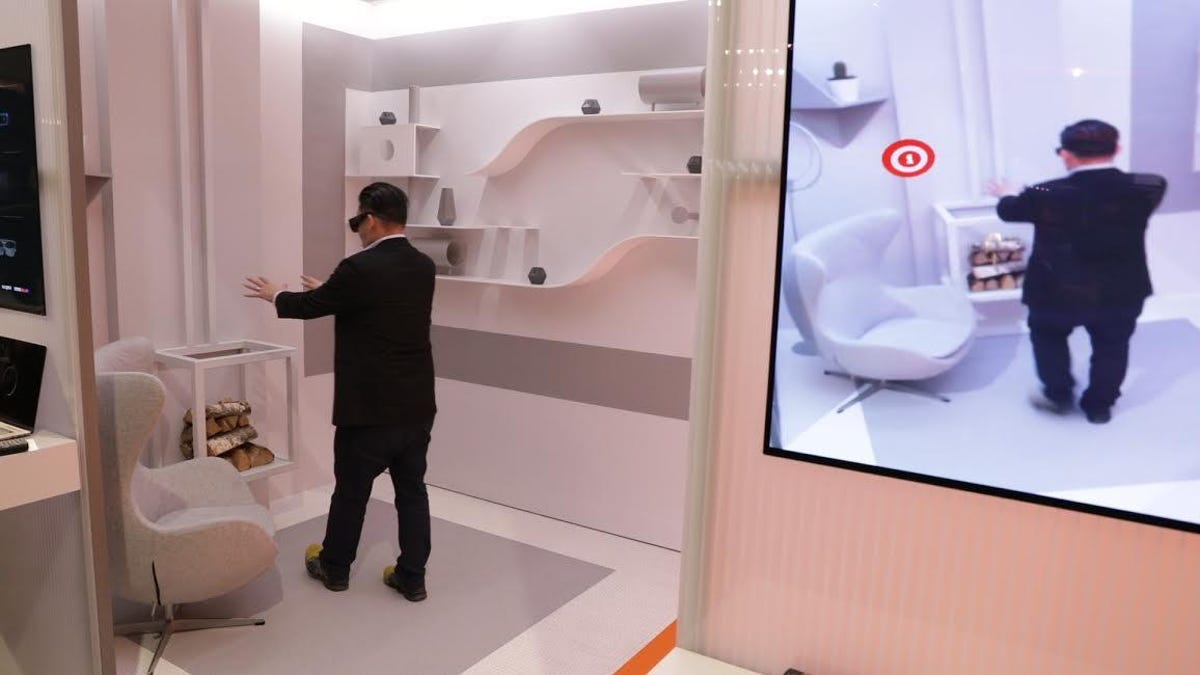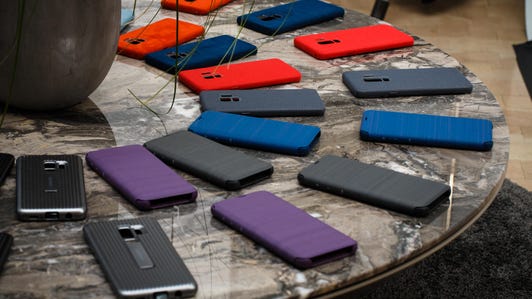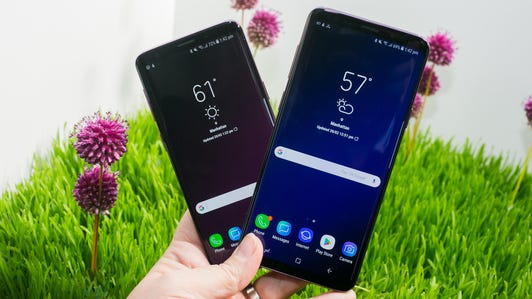I put on a pair of smart glasses and look up at the mock living room before me.
On top of a gray wall, I see a colorful bull’s-eye symbol with a “2” on it. Next to it is a bag of balls. Neither is real. I center my gaze at the target and tap a button on the right temple of my R-9 glasses from ODG. The bag releases. The balls begin to fall, bouncing along a white shelf that is actually there.


Now playing:
Watch this:
5G may make AR smart glasses experiences worth trying
1:04
I look to the left, and there’s an empty fireplace. I point my glasses at another nearby bull’s-eye, click the button and watch as digital flames flicker to life within the fireplace.
This is a demonstration of augmented reality, or the technology that overlays digital images and other data over the real world. Think of the way that a Pokemon Go’s pocket monster appear on your phone sitting atop a real-world fire hydrant, or the way you can place digital IKEA furniture in your own living room.
In this case, the items don’t just hover over real world objects. The system is smart enough to interact with them as well.


A demo uses smart glasses and augmented reality to show off how processing power can be down outside of a device.
Richard Peterson/CNET
But this demo, set up by engineers from Ericsson at the Mobile World Congress trade show in Barcelona, was more than just about AR. The point of the experiment was to illustrate the idea that much of the processing power to make such an AR experience work could be offloaded from smart glasses to another piece of hardware through a speedy 5G connection.
The result would be a pair of smart glasses that won’t be weighed down with powerful components, and thus will be thinner and lighter and potentially run longer without a recharge. Earlier this decade, smart glasses were billed as a new wearable trend with the debut of Google Glass, but consumers rejected them as unwieldy and ugly.
Yet an AR experience wearing glasses makes too much sense not to happen. And using 5G as a bridge to handle a lot of the processing power separate from the device itself could enable smaller and sharper designs.
It’s just one of the ways that 5G — the hottest topic at MWC — is poised to change your life with a faster, more responsive data network. One of the potential benefits is a called “edge computing.” It’s the idea that some of the processing and number crunching that’s currently done by devices — anything from phones to cars — can be rerouted to a nearby network server handled by the carrier.
More from Mobile World Congress
- Hands-on with the Galaxy S9 and S9 Plus
- MWC 2018: All the phones and gadgets announced so far
- Nokia 8 Sirocco is the swanky flagship we’ve been waiting for
- Everything Samsung just announced
In an interview on Monday, AT&T Chief Technology Officer Andre Fuetsch talked about the possibility of using edge computing to handle the massive amounts of data that will come out of cars in the next few years. Vasona Networks, another company at MWC, is showing off an edge computing application that allows a Galaxy S8 to play the PC version of Doom in all its high-res glory with an LTE connection. The processing of Doom, which could never run on a smartphone by itself, is actually done on a cloud service run by another company called LiquidSky. The connection and latency is fast enough that gamers don’t notice that the computer running the game is located elsewhere.


Digital flames flicker from the fireplace when I wear the AR glasses.
Richard Peterson/CNET
The Ericsson demo works in a similar manner. The smart glasses draw from a 3D-rendered map of the living room that was stored on a nearby computer. The idea is that the glasses only need to send back bits of data (such as the act of the balls falling) and the server handles the calculations that let those balls detect the real-life shelf, since it already has that information.
The tech has potential real-life applications and could even be used by firefighters entering a building. If the firefighter’s wearing glasses that can grab a pre-rendered 3D model of the location, a remote system can figure out where the victim is and send digital directions.
“The tech is catching up to what we thought was possible,” said Tony Sanchez, director of the reseller program for ODG, who said this feature could enable more interactions in AR.
It is important to note that the demo was more of a proof of concept. There was actually no 5G being used here, according to Zsolt Parnaki, senior product manager for IoT at Ericsson. That’s because the ODG R-9 glasses don’t have a 5G connection, so the employees used a Wi-Fi connection instead. But Parnaki stressed the AR experience and the remote processing was legit.
If this all pans out, it may finally make smart glasses cool.
MWC 2018: All the phones and gadgets announced so far






+17 more
Galaxy S9 and S9 Plus: Hands-on with Samsung’s iPhone X fighters.
MWC 2018: All of CNET’s coverage from the biggest phone show of the year.



